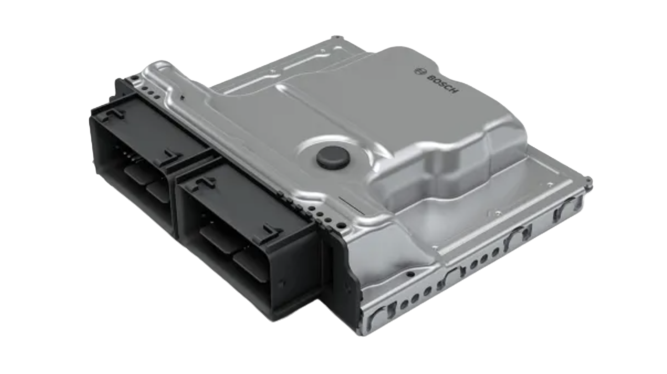ECU Cloning
ECU cloning is a pivotal process in the world of automotive tuning, allowing enthusiasts and professionals alike to replicate the Engine Control Unit (ECU) data from one vehicle to another. This process is invaluable for various reasons, including vehicle repairs, performance enhancements, and customization. In this comprehensive guide, we will delve into the intricacies of ECU cloning, its benefits, challenges, and best practices for achieving optimal results.
What is ECU Cloning?
ECU cloning involves creating an exact replica of an ECU’s data onto another unit. The ECU is the brain of the vehicle, controlling engine functions and other critical operations. By cloning an ECU, you can transfer all the specific configurations, parameters, and software versions from the original ECU to a new or refurbished one. This is particularly useful when the original ECU is malfunctioning, damaged, or needs to be upgraded.

Why is ECU Cloning Important?
ECU cloning is essential for several reasons. Firstly, it enables the replacement of a faulty ECU without the need for reprogramming all the vehicle-specific settings from scratch. This can save significant time and cost. Secondly, it allows for performance tuning by transferring proven configurations from a well-performing vehicle to another, ensuring optimal performance. Finally, ECU cloning is crucial in cases where a vehicle’s ECU needs to be replaced due to hardware failure or when upgrading to a higher-spec unit.
Benefits of ECU Cloning
- Cost-effective Repairs: Cloning allows for cost-effective repairs by transferring data from a damaged ECU to a new one without the need for full reprogramming.
- Performance Enhancement: Transferring performance-tuned data can enhance the vehicle’s performance without extensive modifications.
- Time Efficiency: Saves time by avoiding the need to manually configure each setting on the new ECU.
- Data Backup: Provides a reliable backup of ECU data, ensuring that configurations are not lost if the original ECU fails.
How to Perform ECU Cloning
ECU cloning can be performed using various tools and methods, depending on the vehicle make and model. Here’s a general overview of the process:
Step-by-Step Guide to ECU Cloning
- Identify the ECU Type: Determine the type of ECU in your vehicle to ensure compatibility with cloning tools.
- Select the Right Cloning Tool: Choose a tool compatible with your ECU type. Popular options include KESS3, CMD Flashtec, and Magic Motorsport Flex.
- Connect the Cloning Tool: Attach the cloning tool to the vehicle’s OBD port or directly to the ECU using a bench mode or boot mode connection.
- Read the Original ECU Data: Use the cloning tool to read and save the data from the original ECU.
- Transfer the Data: Write the saved data onto the new ECU using the cloning tool.
- Test the New ECU: Install the cloned ECU in the vehicle and perform tests to ensure all functions are working correctly.
Challenges in ECU Cloning
While ECU cloning offers numerous advantages, it also presents certain challenges. One of the primary challenges is ensuring compatibility between the original and new ECUs. Not all ECUs are compatible with each other, and selecting an incompatible unit can result in functionality issues. Additionally, some manufacturers employ encryption and security measures that can complicate the cloning process.
Overcoming ECU Cloning Challenges
To overcome these challenges, it is important to:
- Research Compatibility: Thoroughly research ECU compatibility before attempting to clone.
- Use Reliable Tools: Use reputable cloning tools that are known for their compatibility and reliability.
- Seek Professional Assistance: If unsure, consult with professional tuners or technicians who have experience with ECU cloning.
Best Practices for ECU Cloning
To ensure successful ECU cloning, follow these best practices:
- Backup Original Data: Always create a backup of the original ECU data before proceeding with cloning.
- Verify Compatibility: Double-check the compatibility of the new ECU with the original data.
- Regular Updates: Keep your cloning tools and software up to date to ensure compatibility with the latest ECUs.
- Test Thoroughly: After cloning, thoroughly test the new ECU to ensure all functions are operational.
Conclusion
ECU cloning is a valuable technique in the automotive tuning industry, providing a cost-effective and efficient solution for ECU replacement and performance enhancement. By understanding the process, challenges, and best practices, you can ensure successful ECU cloning and enjoy the benefits of a well-tuned vehicle. For more insights into ECU tuning and compatibility, check out our comprehensive guide on ECU compatibility.
Want to learn more about ECU cloning? Explore our range of tuning tools and software here.
If you have any questions regarding chiptuning, chiptuning tools or chiptuning files, please reach out to us and we’re happy to answer your questions! Contact us.

